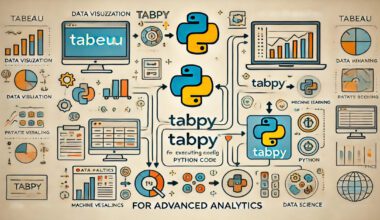Summary: This article discusses the integration of AI with MATLAB and Simulink, focusing on the workflow for developing embedded systems. It highlights the benefits of model-based design, automated code generation, and comprehensive testing, enabling engineers to create reliable AI solutions tailored for deployment in various applications, including automotive and industrial sectors.
Introduction
Embedded AI is transforming the landscape of technology by enabling devices to process data and make intelligent decisions locally, without relying on cloud computing. For instance, a smart camera equipped with embedded AI can analyse video feeds in real-time to detect anomalies, significantly enhancing security systems.
According to a recent report, the global embedded AI market is projected to reach US$826.70bn in 2030, growing at a compound annual growth rate (CAGR) of 28.46% from 2024 to 2030. This rapid growth underscores the increasing adoption of AI in embedded systems across various industries, including automotive, healthcare, and consumer electronics.
This article explores the integration of embedded AI with MATLAB and Simulink, highlighting their roles in designing, simulating, and deploying AI models tailored for embedded applications.
If you are interested in exploring more about AI and its applications, enrolling for an AI course is the best step forward. You can get more information about the same here.
Key Takeaways
- Easily incorporate AI models into embedded systems using Simulink.
- Streamline development processes with model-based design and automated code generation.
- Ensure reliability through rigorous testing and validation methods.
- Monitor AI model performance during operation for immediate feedback.
- Foster teamwork among AI, software, and hardware engineers for optimal results.
Understanding Embedded AI
Embedded AI refers to the integration of Artificial Intelligence capabilities directly into embedded systems. These systems are designed for specific tasks within larger frameworks and often operate under constraints related to processing power, memory, and energy consumption.
Examples include smart sensors in industrial automation, autonomous vehicles, and consumer devices like smart home assistants. The benefits of embedded AI include:
- Real-time Processing: Enables immediate decision-making without latency associated with cloud processing.
- Efficiency: Reduces the need for constant internet connectivity, which is crucial for remote or mobile applications.
- Cost-effectiveness: Lowers operational costs by minimising data transmission and storage needs.
As industries increasingly rely on automation and data-driven insights, the demand for efficient embedded AI solutions continues to rise.
Role of MATLAB and Simulink in Embedded AI
MATLAB and Simulink are powerful tools that facilitate the development of embedded AI systems. They provide a comprehensive environment for designing algorithms, simulating their performance, and generating code for deployment on various hardware platforms.
Key Features
- Model-Based Design: MATLAB and Simulink support model-based design approaches that allow engineers to create visual representations of their systems. This method streamlines the design process and enhances collaboration among teams.
- Simulation Capabilities: Users can simulate AI algorithms within their models to evaluate performance before deployment. This feature is crucial for identifying potential issues early in the development cycle.
- Code Generation: The tools automatically generate optimised C/C++ code from Simulink models, simplifying the transition from simulation to real-world application.
These features make MATLAB and Simulink ideal for engineers looking to integrate AI into their embedded systems efficiently.
Workflow for Integrating AI with MATLAB and Simulink
Integrating AI with MATLAB and Simulink involves a structured workflow that streamlines the process of developing, testing, and deploying AI models in embedded systems. Here’s a detailed overview of the workflow for integrating AI into your projects using these powerful tools.
Define System Requirements
Begin by clearly defining the requirements of your embedded system. Identify the specific tasks that the AI model needs to perform, such as data processing, decision-making, or control actions. Establish performance metrics and constraints related to speed, accuracy, and resource usage.
Design the Model in Simulink
Use Simulink to create a visual representation of your system. This model should include all components such as sensors, actuators, and the AI algorithms that will be integrated. Simulink provides blocks specifically designed for AI functions, allowing you to incorporate Machine Learning or deep learning models seamlessly.
Develop AI Algorithms in MATLAB
In this step, you will develop and train your AI algorithms using MATLAB. This involves:
- Data Preparation: Collect and preprocess data to ensure it is suitable for training your model.
- Model Selection: Choose appropriate algorithms (e.g., neural networks, decision trees) based on your application’s requirements.
- Training: Train your model using MATLAB’s built-in functions or toolboxes like the Deep Learning Toolbox. Monitor performance metrics throughout this process.
Import AI Models into Simulink
Once trained, import your AI models into Simulink. MATLAB allows for easy integration of pretrained models from various sources, including TensorFlow and PyTorch. This step ensures that the AI component is correctly linked within the overall system architecture.
Simulate the Integrated Model
Run simulations in Simulink to evaluate how well the integrated AI performs within the complete system. This includes:
- Testing Scenarios: Apply different input scenarios to assess performance under various conditions.
- Validation: Verify that the AI behaves as expected and meets defined performance criteria.
Optimise and Validate Performance
Analyse simulation results to identify any discrepancies or areas for improvement. Use techniques like hardware-in-the-loop (HIL) testing to validate performance against real-world conditions. This step is crucial for ensuring reliability, especially in safety-critical applications.
Generate Deployment-Ready Code
MATLAB’s code generation capabilities allow you to automatically convert your Simulink models into optimised C/C++ code suitable for deployment on microcontrollers (MCUs) or other embedded hardware platforms. This process eliminates manual coding errors and accelerates the transition from simulation to deployment.
Deploy on Target Hardware
Transfer the generated code onto the target embedded device. Ensure that the deployment environment is set up correctly and that all necessary dependencies are included.
Test and Validate on Hardware
Conduct thorough testing on the deployed system to verify that it operates as intended in real-world conditions. Use feedback from this phase to make any necessary adjustments to both the model and deployment strategy.
Iterate as Necessary
Based on testing outcomes, refine your model and repeat simulations or redeploy as needed. Continuous iteration helps improve model accuracy and system performance over time.
Best Practices for Embedded AI Development with MATLAB and Simulink
Best practices for developing embedded AI applications using MATLAB and Simulink are essential for ensuring the reliability, efficiency, and effectiveness of AI models in real-world environments. Here are several key practices to consider:
Adopt Model-Based Design
Utilise the model-based design approach provided by MATLAB and Simulink. This method allows you to create visual representations of your system, facilitating easier understanding, collaboration, and modifications throughout the development process. It also helps in integrating AI models seamlessly into larger systems.
Thorough Verification and Validation
Implement a rigorous verification and validation process for your AI models. This includes:
- Verification: Ensure that the model meets specified requirements through systematic testing.
- Validation: Confirm that the model performs accurately in real-world scenarios. Use tools like Simulink Test to automate testing processes and validate model performance across various scenarios.
Use Automated Code Generation
Leverage MATLAB’s automated code generation capabilities to convert your models into deployable C/C++ code. This reduces the risk of manual coding errors and accelerates the transition from simulation to deployment, especially in safety-critical applications where reliability is paramount.
Implement Runtime Monitoring
Incorporate runtime monitoring systems within your Simulink models to assess real-time performance. This allows you to track how well the AI model performs during operation, providing insights into its reliability and helping identify potential issues early on.
Conduct Comprehensive Testing
Develop a suite of automated tests using MATLAB Test or Simulink Test to evaluate all aspects of your AI model, from prediction accuracy to integration within the overall system. This systematic approach ensures thorough validation across different operational conditions.
Optimise Model Performance
Regularly analyse and optimise your AI models for performance based on the specific constraints of your target embedded hardware. Consider factors such as memory usage, processing speed, and power consumption during both training and deployment phases.
Iterate Based on Feedback
Adopt an iterative development approach where feedback from testing phases informs subsequent refinements to your models. Continuous improvement based on real-world performance data is crucial for enhancing model accuracy and reliability over time.
Case Studies and Real-World Applications
Several organisations have successfully integrated embedded AI using MATLAB and Simulink. These case studies demonstrate the versatility of embedded AI across various sectors while highlighting MATLAB and Simulink’s role in facilitating these advancements.
- Coca-Cola developed a virtual pressure sensor employing Machine Learning techniques to enhance beverage dispenser diagnostics.
- Mercedes-Benz utilised deep neural networks within simulations to improve sensor accuracy in autonomous vehicles.
- Miba AG implemented a deep learning system aimed at enhancing quality inspection processes in manufacturing environments.
Wrapping it up..
Embedded AI integration with MATLAB and Simulink represents a significant advancement in technology, enabling devices to perform intelligent processing locally while enhancing efficiency across numerous applications.
By leveraging robust design workflows, simulation capabilities, automated code generation, and thorough testing methodologies, engineers can develop reliable embedded systems that meet modern demands.
As industries continue embracing this technology, understanding how to effectively utilize these tools will be crucial for future innovations.
Frequently Asked Questions
What is Embedded AI?
Embedded AI refers to integrating Artificial Intelligence capabilities directly into embedded systems designed for specific tasks within larger frameworks.
How does MATLAB Support Embedded AI development?
MATLAB provides tools for designing algorithms, simulating performance, generating code for deployment on hardware platforms, and validating system functionality through rigorous testing methods.
What are Some Applications of Embedded AI?
Applications include smart sensors in industrial automation, autonomous vehicles’ decision-making processes, quality inspection robots enhanced with deep learning techniques, and consumer electronics like smart home devices.




